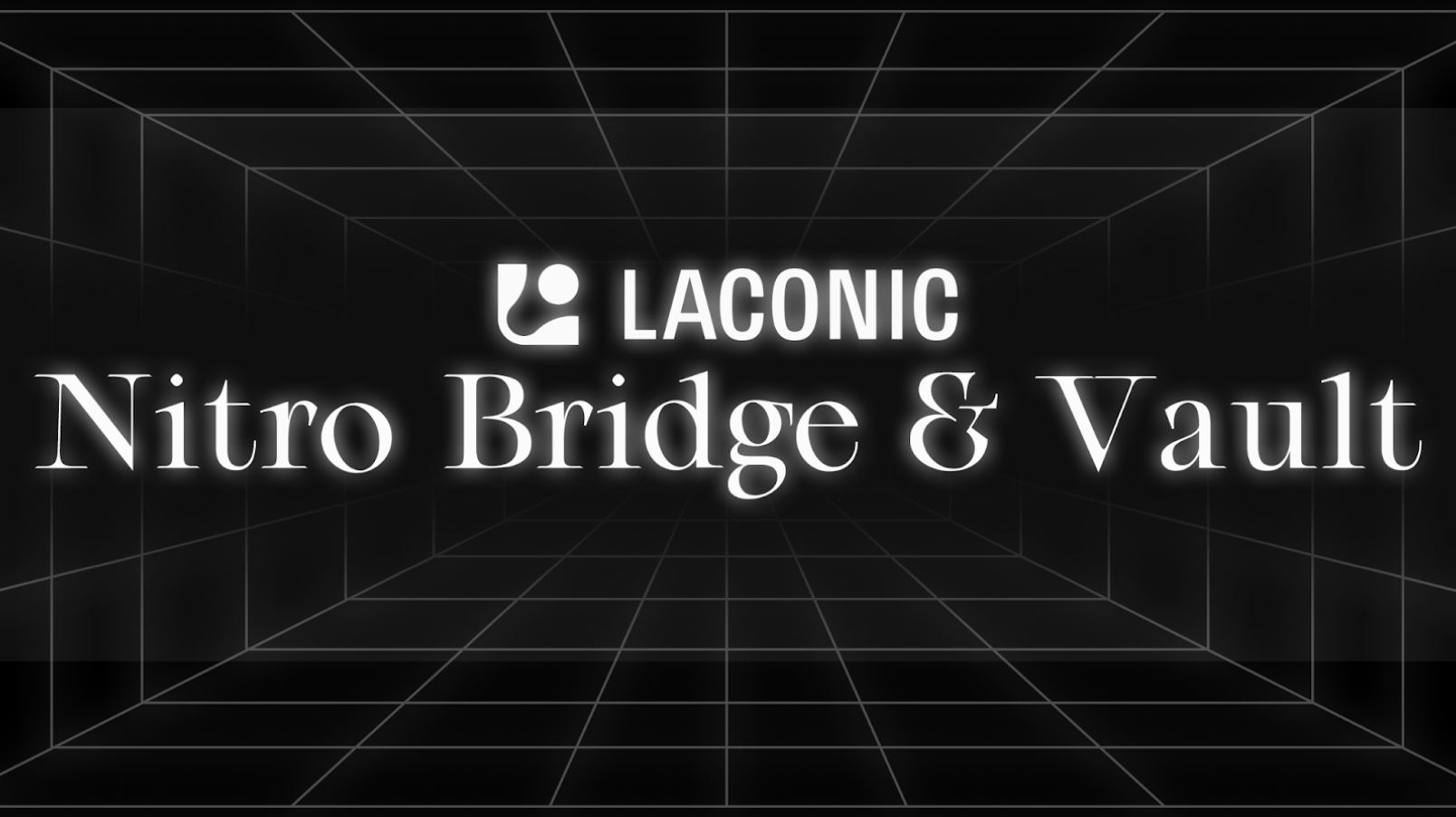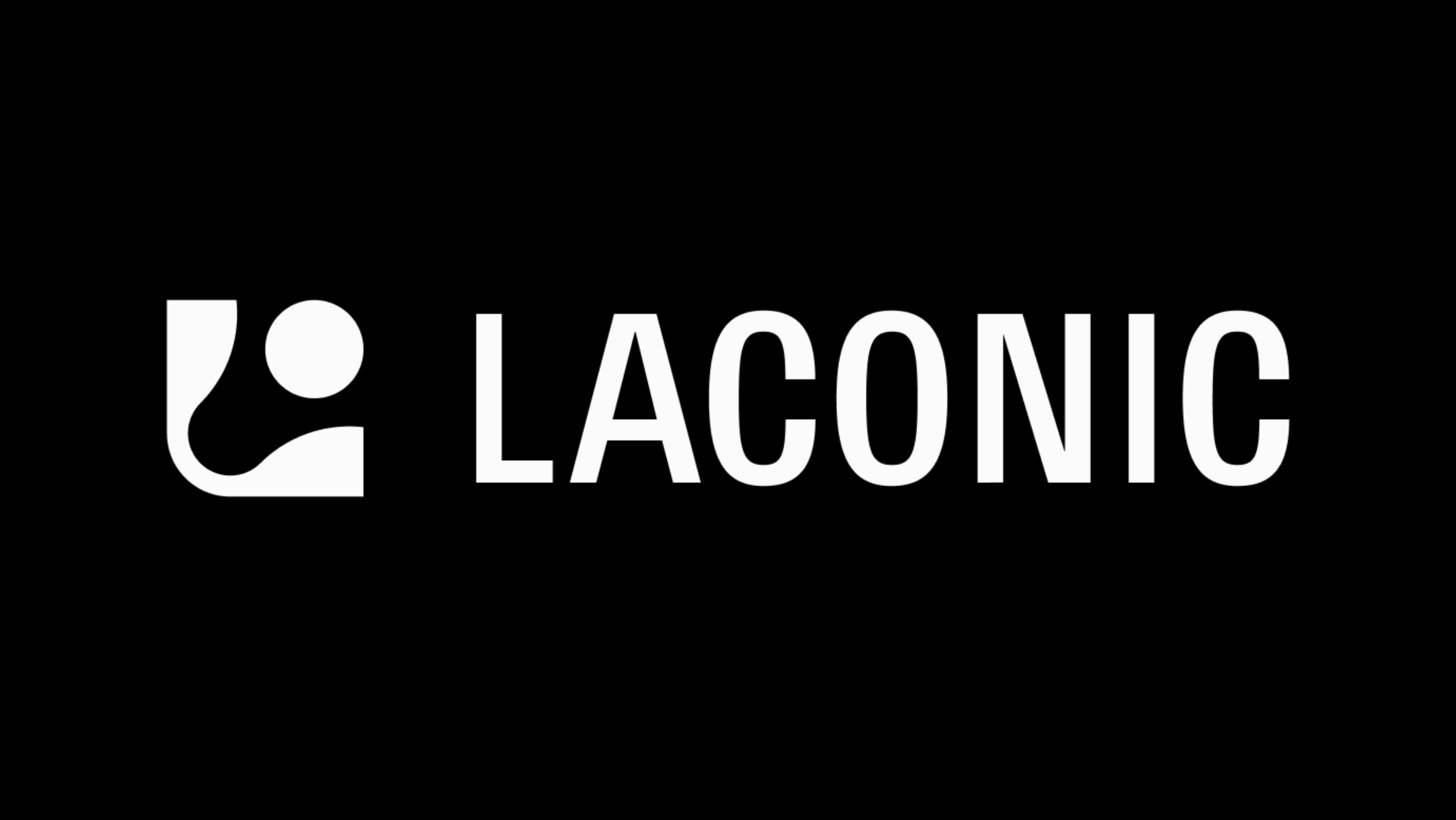Laconic Nitro Bridge: a Crosschain Solution
- Developers

Laconic Nitro Bridge: a Crosschain Solution
Cross-chain interoperability has long been one of the biggest challenges in crypto. Traditional bridges often force a compromise: choose between security, liquidity, or decentralization—but rarely all three. Laconic Nitro Bridge changes that.
Designed for institutions, enterprises, and advanced users, the Nitro Bridge is a trust-minimized Ethereum-to-Cosmos bridge that combines user sovereignty, unified liquidity, and decentralized operation. Unlike existing solutions, Nitro offers an L1-verifiable "escape hatch," ensuring users can always withdraw funds directly from Ethereum.
What Makes the Laconic Nitro Bridge Different?
Most cross-chain solutions expose users to risk through centralized custodians, pooled liquidity, or lack of verifiable exits. The Nitro Bridge and Shared Nitro Vault avoid these pitfalls with a design centered on verifiability and sovereignty:
1. Shared Nitro Vault (Ethereum): An immutable smart contract that passively holds all deposits, verifies proofs, and releases funds on request.
2. Nitro Bridge Cosmos SDK Module: Mandatory IBC middleware for participating Cosmos chains that manages mint/burn and cryptographic handoffs.
3. Schnorr Aggregate Signatures: Validator sets use efficient threshold signatures to sign proofs, preventing fraud and preserving chain of custody.
Together, these create a single fungible asset inside Cosmos while maintaining a verifiable Ethereum claim.
How the User Flow Works
Deposit: A user deposits USDC into the Shared Nitro Vault on Ethereum, designating a Cosmos chain (Chain A).
Proof Issuance: Validators on Chain A generate a Schnorr-signed proof of the user's claim.
IBC Transfer: The user sends Bridged-USDC from Chain A to Chain B via IBC. Chain B mints the asset and issues a new validator proof.
Chain of Custody: The client software automatically fetches updated proofs after each transfer, ensuring the user always holds a valid L1-verifiable proof.
Escape Hatch Withdrawal: At any time, the user can submit their latest proof directly to the Ethereum contract to release funds, independent of Cosmos chain states.
This mechanism ensures continuous verifiability, censorship resistance, and sovereign control.
Validator Security Model
For validators, the Nitro Bridge functions as a distributed cryptographic system:
Validators cannot create fraudulent proofs (threshold signatures prevent it).
They cannot block withdrawals (escape hatch bypasses them).
They cannot ignore Ethereum finality (continuous state monitoring enforces it).
Every participating chain's active validator set runs the bridge, backed by full economic stake. This ensures that the bridge inherits the security of the underlying chains, unlike centralized bridges vulnerable to multisig failures.
Benefits and Trade-Offs
Advantages of Nitro Bridge:
Trust-minimized Ethereum–Cosmos bridging
No commingling of funds
Backed by full chain security
Creates a single fungible cross-chain asset
Direct L1 escape hatch to Ethereum
Trade-offs:
Validators must run additional cross-chain infrastructure
Core contract immutability ensures neutrality, but upgrades require coordinated redeployment
Compared to systems like Stargate or standard IBC transfers, Nitro provides a unique combination of liquidity, verifiability, and security.
Enterprise and Institutional Use Cases
The Shared Nitro Vault opens new possibilities for enterprises, high-net-worth individuals, and institutional players:
Non-Custodial Design: Assets remain verifiably owned, avoiding custodial classification under tax and regulatory regimes.
Tax Optimization: Transfers inside the bridge may defer taxable events until funds exit to Ethereum, enabling strategies like tax-loss harvesting.
Jurisdictional Flexibility: Transactions can occur in favorable jurisdictions while maintaining Ethereum-based settlement security.
Industry Applications: Stablecoin mortgages, captive insurance, real estate settlement, health data trusts, and other sectors requiring regulatory alignment with crypto-native flexibility.
Building With Nitro Bridge
The Laconic Nitro Bridge and Vault deliver a new standard for cross-chain interoperability, combining Ethereum's settlement guarantees with Cosmos's scalability. By uniting user sovereignty, unified liquidity, and decentralized operation, Nitro enables both individuals and institutions to bridge assets with confidence.
For developers, enterprises, and validators seeking a secure, compliant, and scalable cross-chain solution, Nitro represents a step change in how digital assets can move across ecosystems.
If your organization wants to explore using Laconic's Nitro Bridge Solution, contact us at hello [at] laconic [dot] com.
